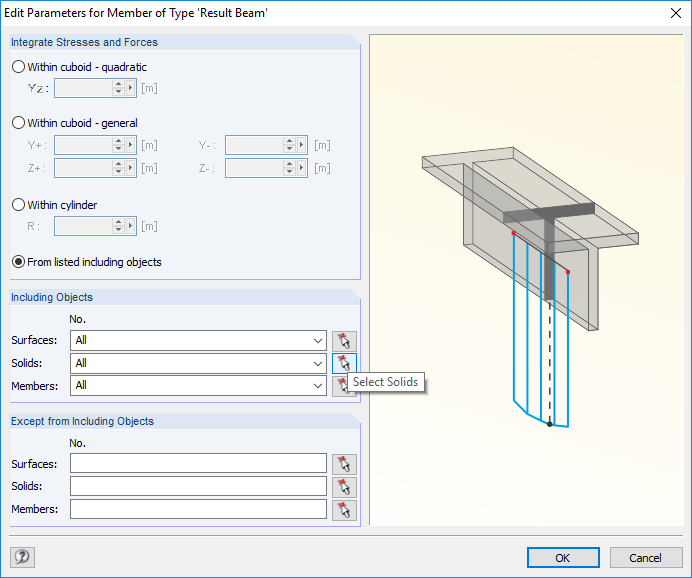The result beam is used in RFEM to calculate these values. A seismic analysis is performed to generate equivalent seismic loads for each eigenvalue and direction. The procedure in RF-DYNAM Pro – Equivalent Loads will not be explained in detail here. Find more information here:
The calculated equivalent loads are separated for each direction in the result combinations. Result beams are generated after the dynamic analysis. The function of the result beam is to integrate all member and surface internal forces in the beam element to obtain the internal forces for the entire structure referred to one beam. Afterwards, the shear force can be obtained for each story in the x- and y-directions by checking the shear forces of the result beam. On the outside of the structure, a result beam is generated by copying the columns from the edge.
After copying the columns, their settings will be changed by modifying the element type to "Result Beam". It is then possible to make special entries for the result beam; here, the integration of the entire internal forces in the result beam.
After defining the result beam, the internal forces of the result beam can be analyzed by calculating the structure. The internal forces Vz and Vy are important for the evaluation. The maximum of the shear force is visible on the bottom side of the result element, which takes the entire structure into account.
The shear force for each story is always the difference between the top and bottom values. For each eigenvalue, shear forces in any y-direction are obtained by means of a 3D structure with eigenvalues in the x- and y-directions. In the result combination, 1 and 2 are thus transversal shear forces in the x- and y-directions. Note: For a regular structure with eigenvalues in only one direction, only one shear force for the considered direction will be obtained.


